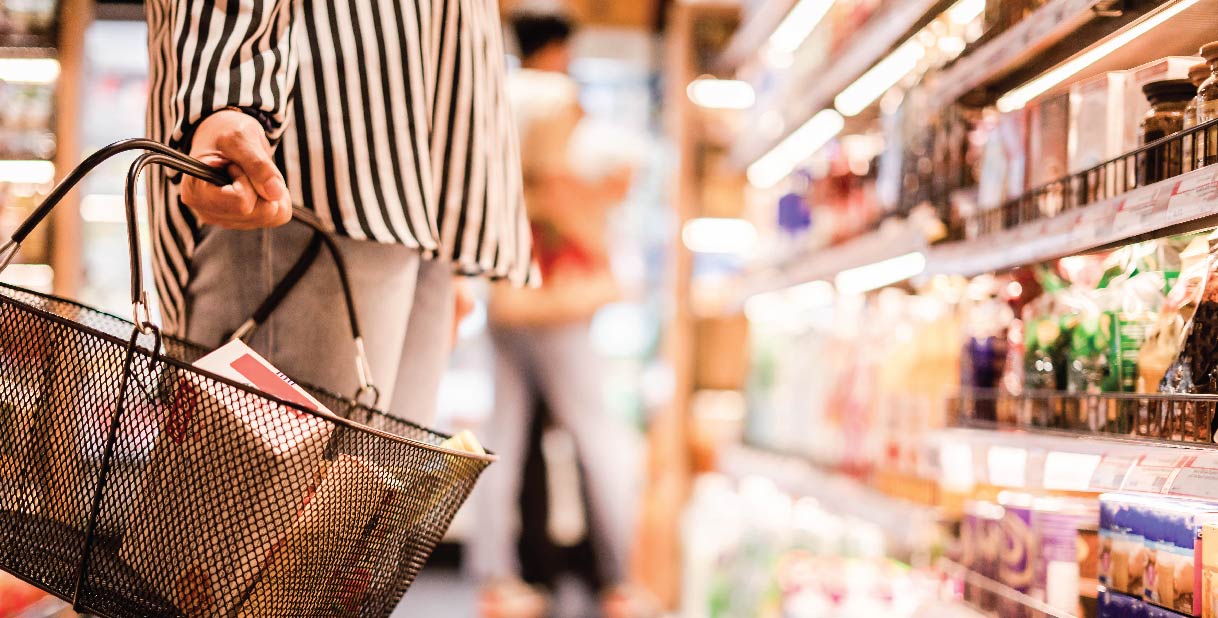How Food & Beverage Became the Top Selling CPG Category
Posted: 06/17/2021 | Author: Jim Lochner for Creatives On Call | Tags: Thought Leadership

While the world was stress baking, doom scrolling, and pantry hoarding, more than 20 million new CPG customers entered the online arena in 2020. The share of households buying online food rose to 32% from 19%. And with a $66 billion market representing 44% of sales, Food & Beverage is now the largest online CPG segment, overtaking health and beauty (38%) for the first time, followed by home and kitchen and pet supplies (both 8%), and baby care (2%). Beverages rank first in terms of e-commerce dollar growth, followed by wine, coffee, candy/gum/mints, health and performance, salty snacks, cheese, cookies and crackers, spirits, and cereal and granola. By 2025, revenue from the e-commerce US food and beverage industry will rise to $35.7 billion—making up 15% to 20% of the industry’s overall sales. But how did Food & Beverage find its recipe for success? It starts with the right people.
Where It Started
When the pandemic started, only half of companies in the food and beverage industry had an e-commerce presence. Many online stores felt like an afterthought. Even major CPG companies like Nestle, PepsiCo, and Mars, which had a solid footing in selling direct-to-consumer, found that DTC made up only 10% of their revenue in 2019. When the pandemic wreaked havoc on restaurants, big brands and artisan food makers launched online stores almost overnight, and supermarkets and restaurants introduced new delivery models.
How It’s Going
Even though supply chain disruptions made it difficult for existing food and drink e-commerce platforms to handle the increase in demand, grocery CPG sales rose 125% in 2020. Click-and-collect, which grocers expanded during the pandemic, showed a 130% increase in orders while the number of shoppers using the service increased 113%. On the delivery side, Instacart saw a 17% increase in merchants on its platform, accounting for $15.7 billion in food and beverage sales, second to Amazon’s $17.4 billion but ahead of Walmart ($6.5 billion), Kroger ($6.1 billion), and Target ($2.2 billion).
The sales for Grupo Bimbo—which represents Entenmann’s, Ball Park hot dogs, Arnold bread, and Boboli pizza crust—grew 15.4% over 2019, followed by General Mills (Betty Crocker, Pillsbury, Cheerios, Häagen-Dazs, Green Giant, Totino’s, Progresso, Yoplait), Conagra (Duncan Hines, Orville Redenbacher’s, Birds Eye, Hunts, Healthy Choice), and Mondelez (Oreo, Ritz, Wheat Thins, Chips Ahoy), all of which grew more than 10%. And because we all needed liquid fortification to get through the last year, it’s perhaps no surprise that Mark Anthony Brands, maker of White Claw hard seltzer, grew 131%.
Where It’s Headed
After a year of eating their feelings, consumers are focusing on their mental and physical well-being. In a recent survey, 80% of consumers worldwide said they were planning to eat and drink more healthily in 2021 as a direct result of COVID-19. One of the biggest trends in the food and beverage industry is a focus on “preventative eating” or “proactive eating”—from innovative and savory superfoods that boost immunity like mushroom coffee, algae capsules, and bone broth to meat-free products. Meat alternative sales were up 129% in 2020, with frontrunner brands like Impossible Foods and Beyond Meat launching DTC websites in the middle of the pandemic, and the industry is projected to increase to $85 billion by 2030. Packaged meals, ready-to-eat meals, and meal kits—particularly if they’re healthy—will continue to have a strong future.
* * *
Last year, 18% of consumers, roughly one in five, changed their primary method of grocery shopping to shopping online. Now that they’ve experienced the ease of ordering food and having it delivered to their door, they’re converts for life. 31% will likely continue to use grocery pickup or delivery even after the pandemic is over, and retailers that offer omnichannel shopping experiences will see the greatest success.
Creatives On Call has experienced creatives standing by to help you manage your shopping and distribution channels.
____________
This is a time for marketers to step up to the challenge and get creative in meeting current demands and behavior changes. Creatives On Call supports your business through this. Contact us here. We have Marketing professionals ready to start in areas including:
• Strategy & Advisory
• Design and Production
• Content Creation & Management
• Customer Engagement & Experience
• Learning & Knowledge Management
• Digital Technology & Transformation
